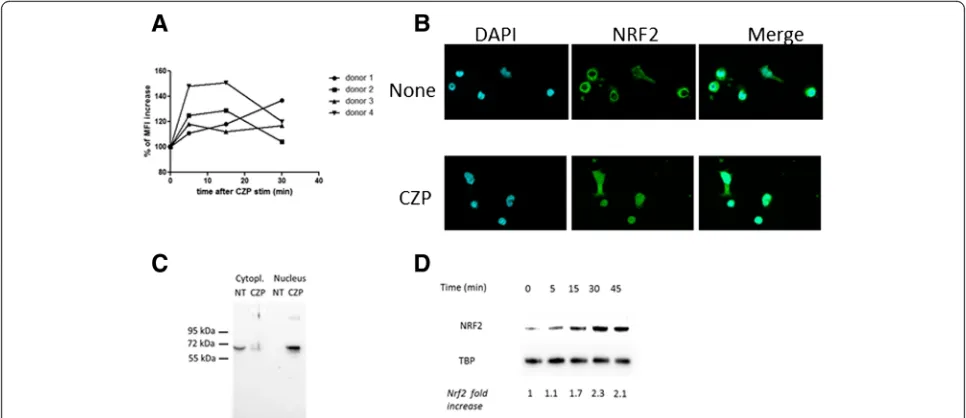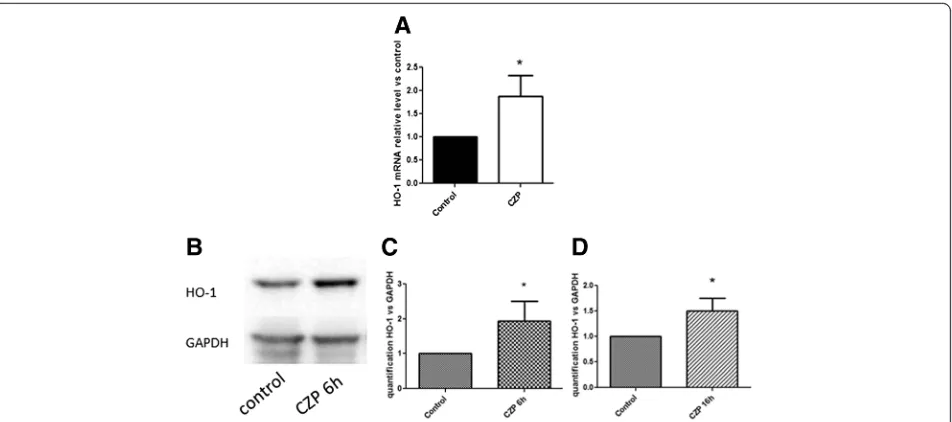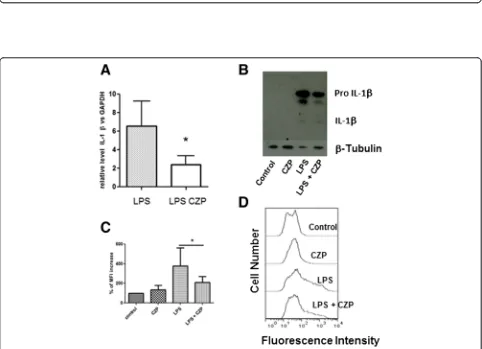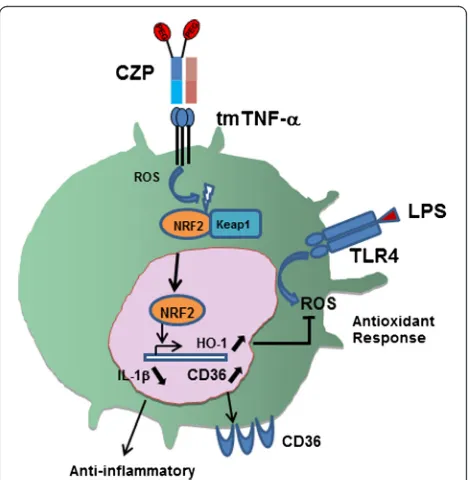Anti TNF certolizumab pegol induces antioxidant response in human monocytes via reverse signaling
Full text
Figure




Related documents
A novel tablet formulation for oral administration using guar gum as the carrier and indomethacin as a model drug has been investigated for colon targeted drug delivery using
As part of the quality control and accreditation of the routine process now operating in these laboratories, we describe an approach to identifying mixed samples using
This Article will discuss: (1) the purpose of the attorney-client privilege; (2) the possibility of intervention for a client who fears that defense counsel will not
We start with a lemma that provides upper bounds for the norm of the linear combination αx ± βy where α, β are scalars while x, y are vectors in the normed linear space ( X, k.k
4.2 Effects of RGS2 on the enhanced expression of stress response factors occurs through translational means and not through
So-called congenital hepatic fibrosis of the liven, with which this report is con- cerned, presents the following characteristic features: (1) diffuse dysplasia of the inter-
However, interestingly, in both cases presented in this paper, substance intoxication symptoms did not start while the patient was using substance or immediately after he quit it
We found that several bee taxa were consistently present and abundant flower visitors: honey bees (Apis mellifera), bumble bees (Bombus spp.), blueberry bees (Habropoda
